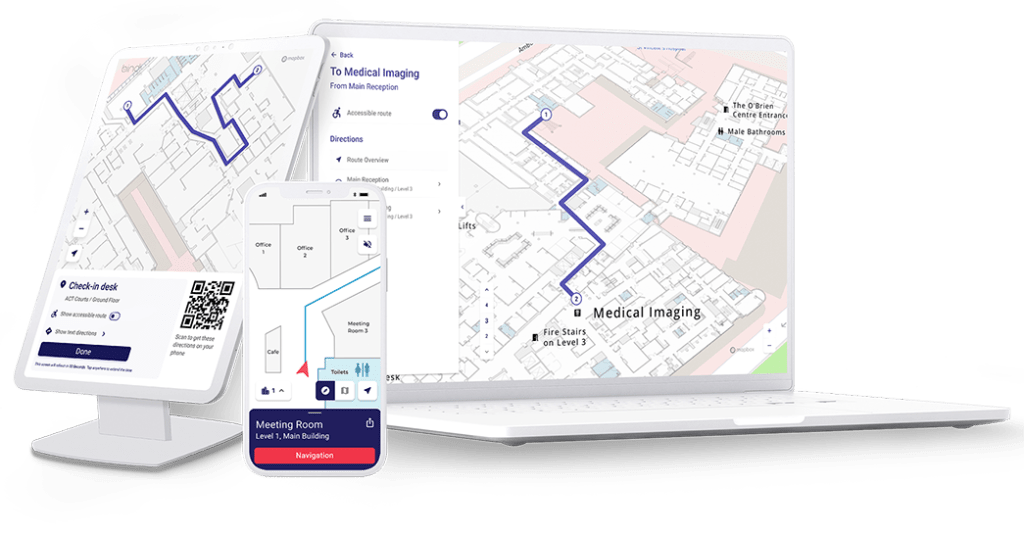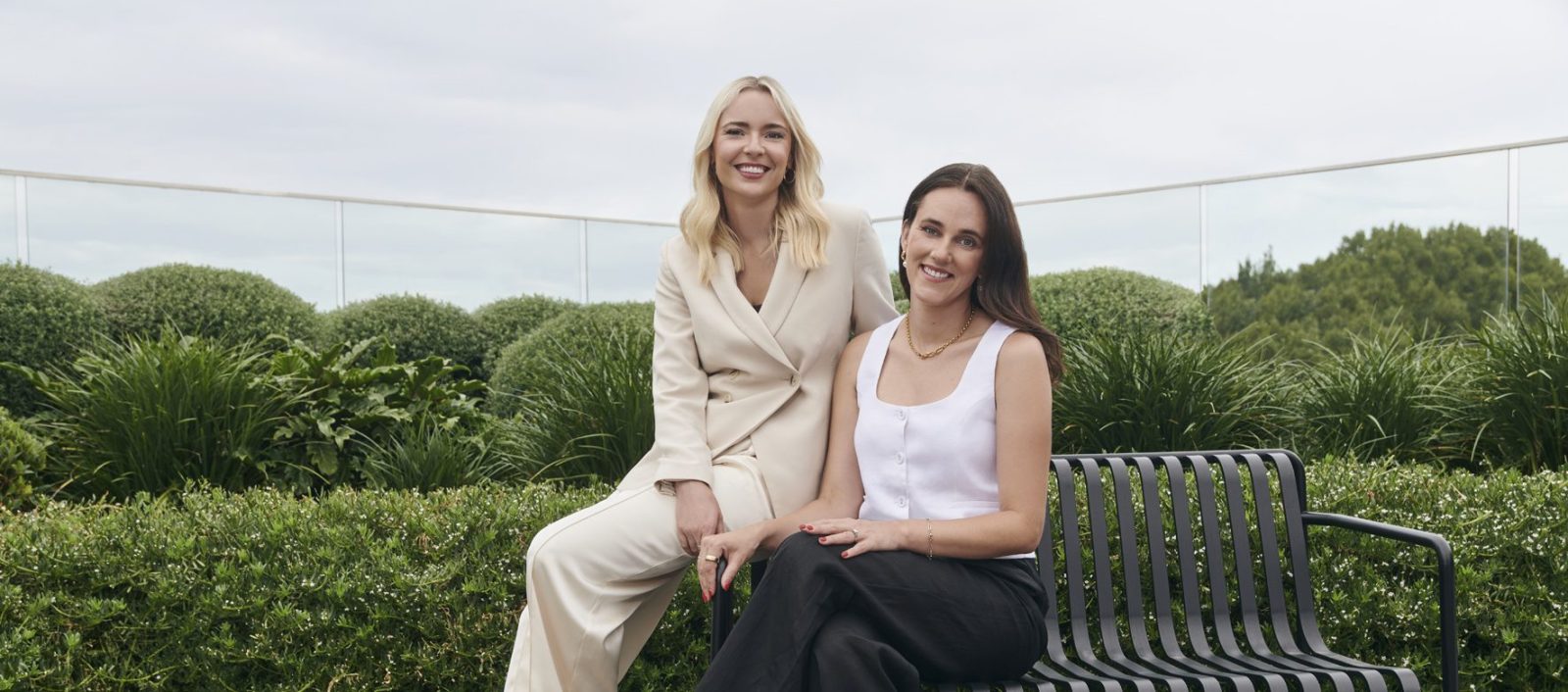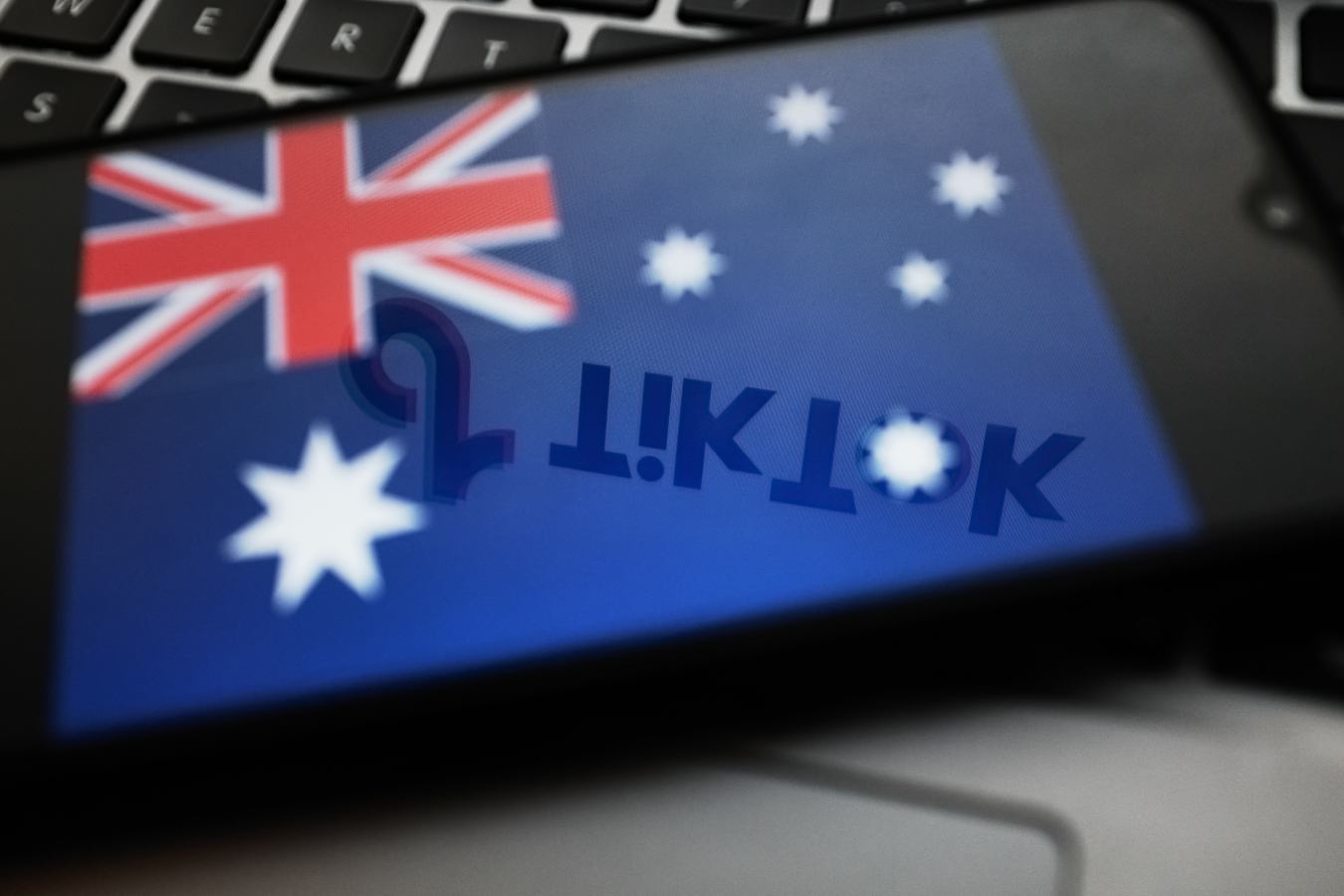Entrepreneur Anna Wright started BindiMaps in 2017. The app provides indoor maps for airports, shopping centres, hospitals, office buildings, libraries, sports grounds, and events. Next up is a pre-series A raise, and expansion into the U.S.

If you have ever wondered why Google and Apple Maps work in the streets, but not as well in labyrinth-like indoor spaces, you are not alone.
It’s a question University of Technology business school professor Anna Wright asked herself in 2017.
“I should be completely blind,” Wright tells me on the phone. “I’m not – I’ve got a genius doctor who kept my eyesight for me. But when I was diagnosed, I was told ‘you will go blind.’ And so, you start getting ready for that, learning things like screen readers, and what’s available to help me.”
Throughout that process, Wright found herself at Central Station in Sydney, on her way to work, and it hit her how difficult navigating that environment would be.
“I had a complete meltdown, thinking ‘how am I ever going to learn to navigate something like Central Station when I’m blind and having to learn to count steps,’ which is the way that people who are blind learn to navigate.”
Wright was accustomed to using maps on her phone to find her way from place to place, and asked herself why it couldn’t offer a similar experience in an environment with a roof.
“Why doesn’t Google Maps work indoors, it should,” Wright asked herself. “And if no one else is going to fix this, I’m going to fix this.”
“We’ve reverse-engineered what we call a SLAM technique, simultaneous locating and mapping. We put that into what we call a fusion algorithm.”
Anna Wright
Fast forward seven years and BindiMaps – the company Wright founded soon after that moment in Central Station – is available worldwide on the Google Play and Apple app stores. Wright has worked full-time in the business since 2019.

“We do airports, we do shopping centres,” says Wright. “Hospitals, a whole bunch of office buildings, libraries, sports grounds, events.”
While developing the app, Wright investigated the reasons that Google Maps wasn’t already operating in the indoor privately owned space. It came down to hardware, and the business/customer model.
“Our very first iteration of BindiMaps, we needed to deploy hardware, which Google’s not interested in. They want to use GPS, which degrades once you’re indoors. And we can understand that – what we’re launching this year is very exciting, because it’s been developed to 2.0, which is where it’s infrastructure-less deployment.”
Wright says Google Maps operates in public spaces, and the customers she was targeting were in the private domain.
“The other issue that Google avoided in only doing outdoors, is privately owned maps. So all of the maps that we have, we work with the building owners – the building owner is our customer. They are the ones that are buying BindiMaps and installing it,” says Wright.
The secret sauce or ‘tech’ that BindiMaps holds?
“We’ve reverse-engineered what we call a SLAM technique, simultaneous locating and mapping. We put that into what we call a fusion algorithm,” says Wright.
“Why doesn’t Google Maps work indoors, it should,” Wright asked herself. “And if no one else is going to fix this, I’m going to fix this.”
Anna Wright
Building the maps can now be done with smartphone devices that many people already own. Users can access the maps through the BindiMaps app.
“We set ourselves some tech constraints – the first is that it has to work on a standard smartphone. No fancy equipment needed to go into the location, or additional equipment for the phone. We also wanted to achieve accuracy – below 30 centimetres of error. And that’s because we are guiding people who are not sighted.”
As well as venues in Australia, BindiMaps is available at international airports and has recently seen an uptick in interest from the United States.
“We’re getting a lot of inbound leads, especially from California. It’s around the Americans with Disability Act. Access is such an important thing at the moment. People are getting sued left, right and centre around digital access. It’s just a little jump to go from digital access – websites – to digital access in a physical space,” says Wright.
While the app was developed with people who cannot see in mind, the technology BindiMaps has developed can be useful for anyone. It’s a market that has great potential, Wright says.
“We’re the only ones in the world that have been able to crack this – not needing any form of infrastructure to provide localisation indoors.”
How does it differ from Google Maps?
The Google Maps website states that it does now provide indoor maps in airports, malls, stadiums, and transit. “In addition to making the content available to our users in Google Maps, your indoor map will also be available through the Google Maps APIs for use in your mobile applications or website.”
BindiMaps meanwhile is raising funds to prepare the company to have a presence in the US.
“We are looking at raising 4-million dollars in a seed A – between a seed round and a series A,” says Wright.
To help the company prepare for the raise, Wright is tapping into the advice of fellow entrepreneurs who have taken products and services into the US. She is a part of the Innovation Bay community of entrepreneurs.
“If I want to ask a question like, who has taken smart cities, SaaS, to the United States, whose brain can I pick for half an hour? I will get all sorts of replies. We call it the ‘brains trust.'” says Wright.
The founder and CEO says the advice she has received from the ‘brains trust’ has been helpful to strategise scaling into the lucrative US market. Having a sales and marketing presence in the country is imperative, she says.
“One of the great things about Innovation Bay is that you get to talk to people who have gone before. Their advice is – you can’t scale into the United States without boots on the ground. So, do we need to be there from an installation point of view? No. But from a sales point of view? Yes, we do.”
Bringing Australian technology to the country where Google Maps and other mapping services are headquartered, is a huge opportunity, Wright says. And while she is still working on Central Station in Sydney to provide BindiMaps to commuters, companies like Vicinity Centres which owns shopping centres all over the country have recently come on board.
“I remember going from having a paper map in the car and reading that, to getting around using Google Maps, Waze, Apple Maps. To me, to be on the cutting edge of technology that can make the same sort of changes, it’s just really exciting.”
Anna Wright will be speaking about accessibility at Innovation Bay’s Inspire event on May 22 and 23. Forbes Australia is the media partner for Inspire, an event that is open exclusively to Innovation Bay members.


